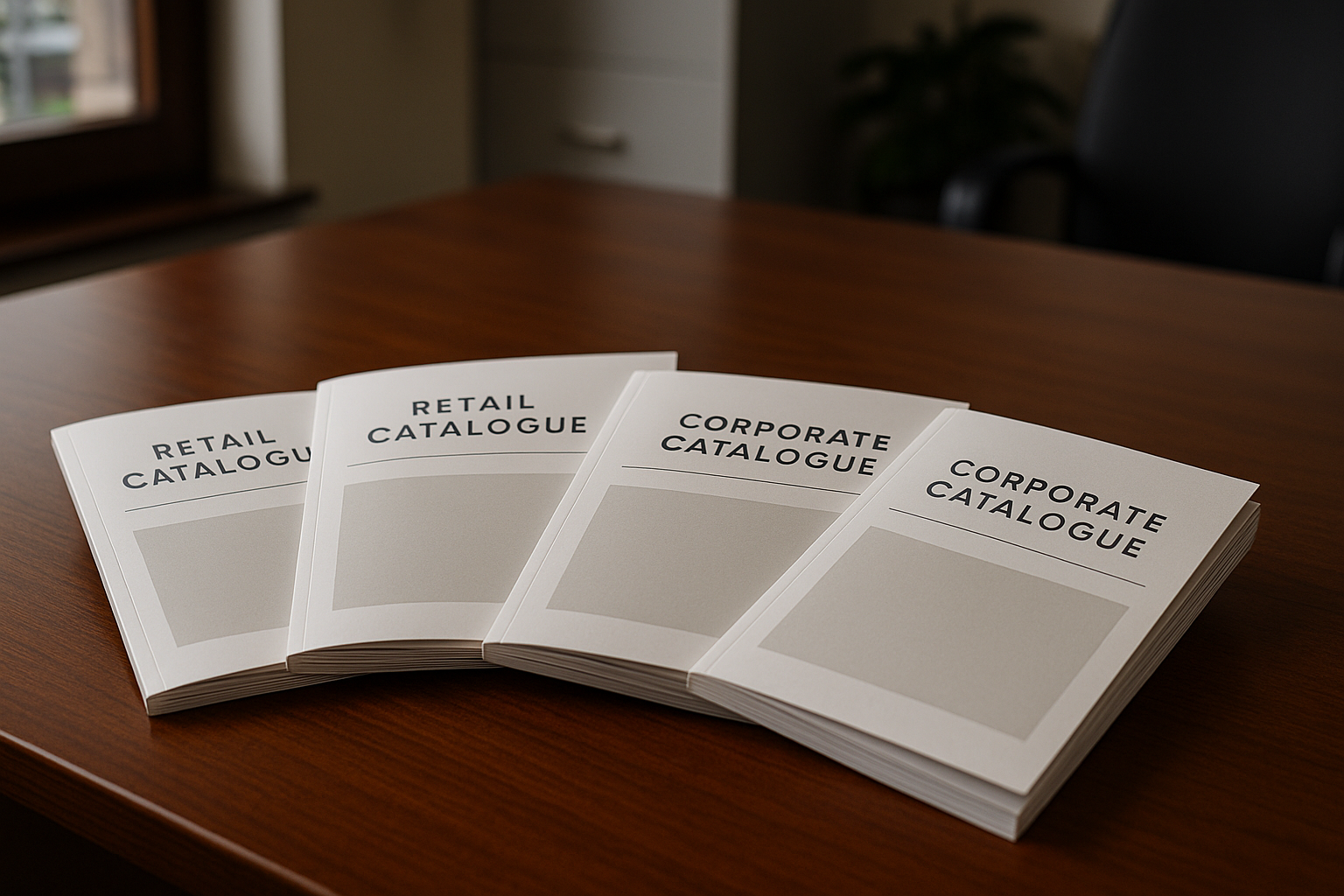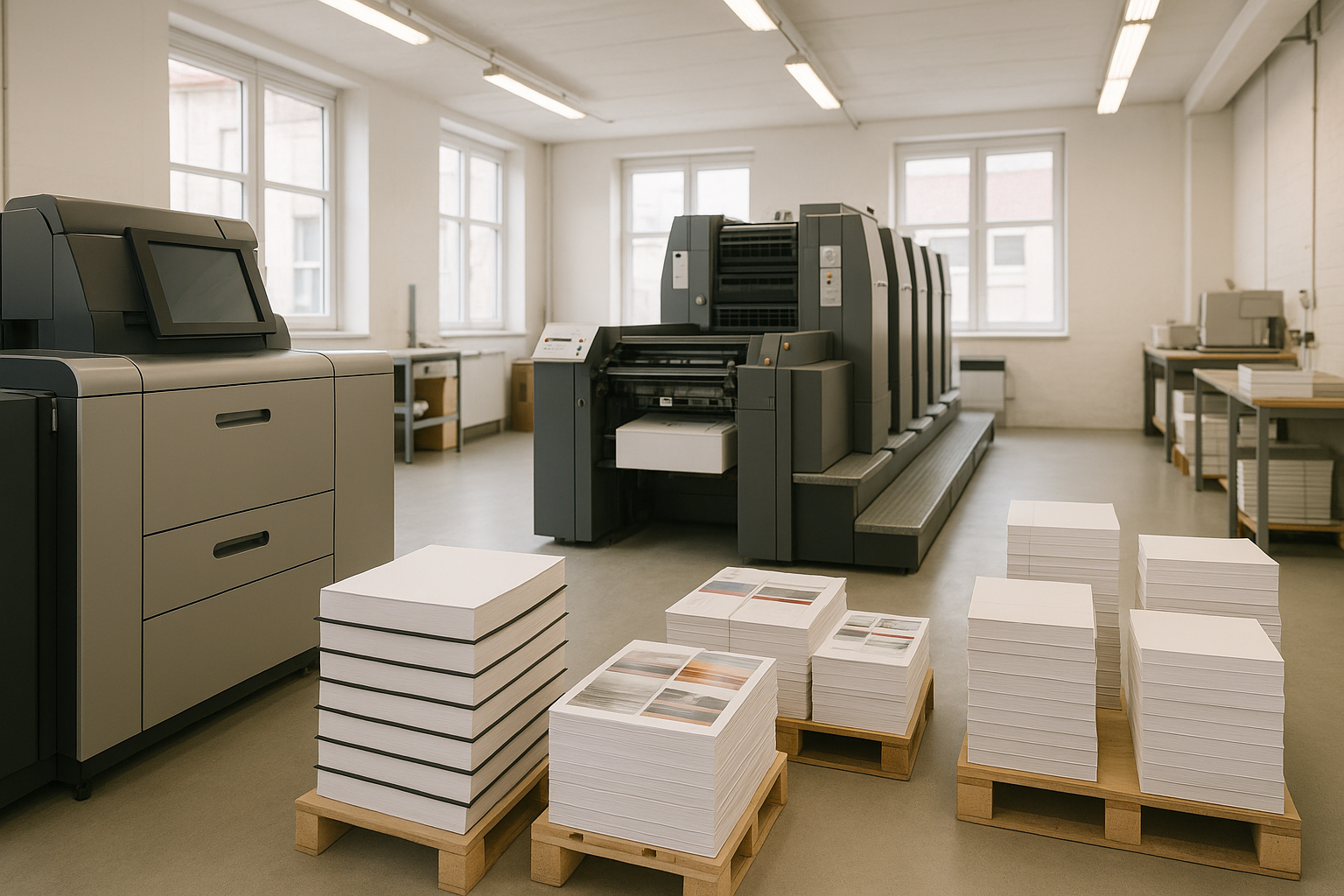Printed corporate catalogues and retail catalogues are powerful, tactile sales tools that convert browsers into buyers — especially for South Africa retailers and corporate buyers who still respond to high-quality printed marketing. This guide explains how to design, produce and distribute catalogues that sell, combining commercial printing expertise, cost-effective print solutions and fast turnaround delivery across South Africa.
Why invest in printed catalogues when digital channels are booming?
Printed catalogues remain a high-impact channel for both corporate communications and retail promotion. A well-produced catalogue sits on a desk or coffee table, creates brand recall and provides a curated product experience that a scrollable website can’t always match. For South African small businesses, combining catalogue drops with digital retargeting can create measurable omnichannel lift.
Printed catalogues are particularly valuable in these contexts:
- Product-heavy retail seasons (homeware, fashion, appliances)
- Corporate procurement brochures and annual product updates
- Educational and bulk catalogues for schools and institutions
According to Wikipedia, the mail-order catalogue has roots in the 19th century and helped shape retail distribution — one notable early pioneer was Montgomery Ward (Wikipedia: Montgomery Ward).
Print Corporate Catalogues and Retail Catalogues — how do you start?
Start with clear objectives: awareness, lead generation, direct sales or account management. Define target audiences (B2B procurement managers vs retail shoppers), distribution method (handout, direct mail, in-store), and timing (seasonal, term preparation for schools, event-related). With those set, your creative, paper selection and print run size become far easier to specify.
Key starter checklist:
- Audience profile and call-to-action (CTA)
- Content plan and SKU hierarchy
- Paper, binding and custom finishes
- Budget, turnaround and delivery schedule
How do design and layout influence catalogue sales?
Design is the bridge between product and purchase. Effective catalogues prioritise scannable layouts, hierarchy for featured items, and clear CTAs (order codes, URLs, QR codes). For corporate catalogues, include technical specs and compliance details. For retail catalogues, use aspirational imagery and size/colour swatches.
Design best practices:
- Lead with 8–12 hero SKUs per spread for retail. “8–12 hero SKUs per spread for retail” is a business and retail strategy that emphasizes concentrating sales and marketing efforts on a core group of 8 to 12 top-performing or most strategic Stock Keeping Units (SKUs) to drive the majority of a brand’s growth and customer acquisition.
- Use white space to improve readability and perceived value.
- Consistent product numbering and index for easy ordering.
Services such as brochure and booklet specialists can help you map content flow — consider working with providers that offer booklet printing and brochure printing services for polished results (booklet printing, brochure printing services).
Which printing methods should you choose: litho, digital or print-on-demand?
Choosing the right printing method depends on volume, turnaround and budget. Litho (offset) printing gives lower unit costs for large runs and exceptional colour fidelity — ideal for seasonal retail catalogues and large corporate runs. Digital printing and print-on-demand work well for variable data (personalised catalogues), short runs and fast turnaround.
Comparison table:
Method | Best for | Lead time | Cost per unit |
Litho (offset) | Large print runs, premium finishes | Longer setup, high throughput | Low at scale |
Digital | Short runs, personalised catalogues | Fast | Higher per unit |
Print-on-demand | Continuous replenishment, low waste | Fastest | Flexible |
For South African delivery across regions, partnering with a commercial printing partner that offers both litho and digital capabilities ensures you can mix high-quality catalogue runs with quick replenishment for stores.
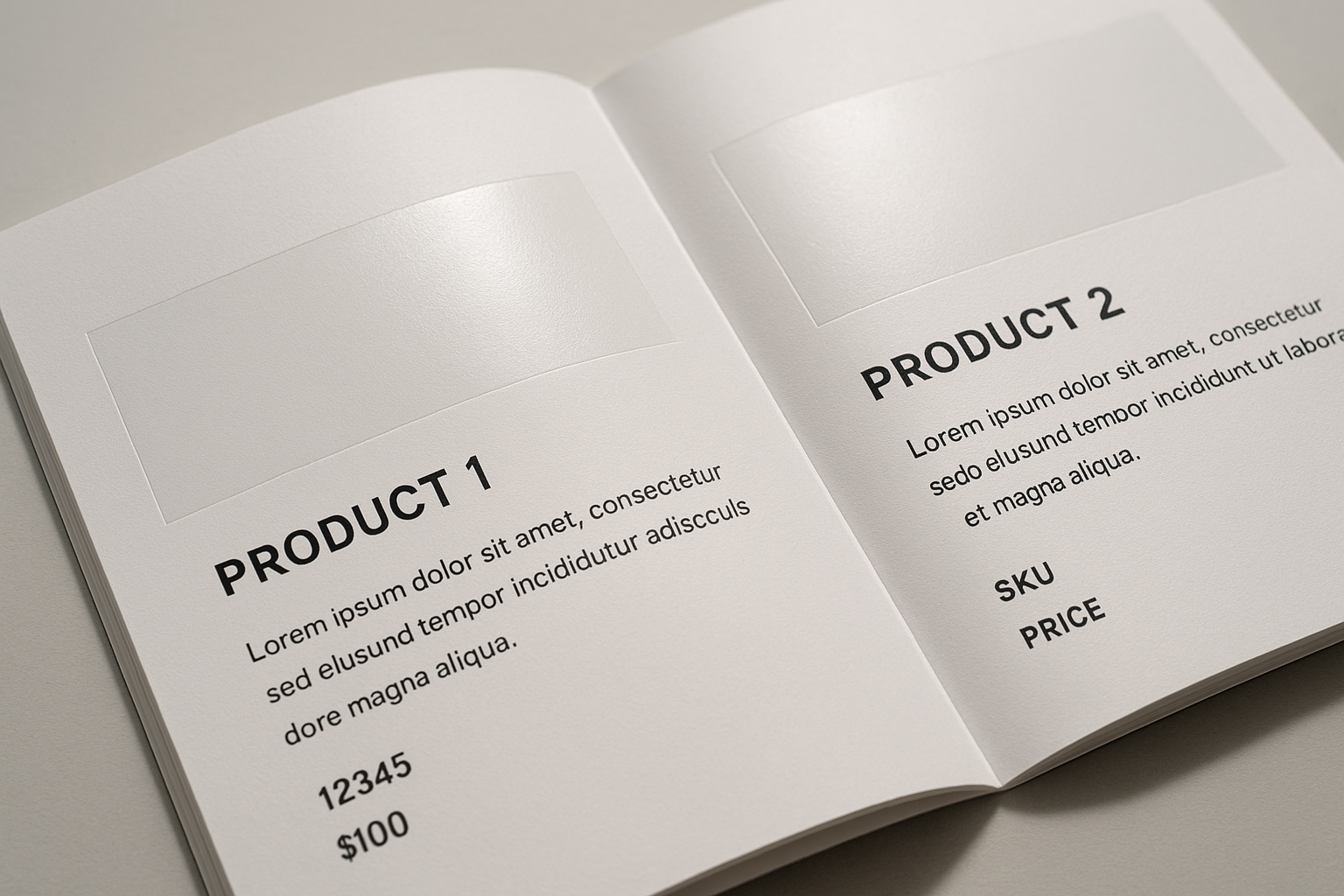
What paper stocks and custom finishes drive conversions?
Paper and finish convey brand quality. Heavier covers (250–350gsm) with silk or matte lamination look premium and survive direct mail. Interiors typically range 90–150gsm depending on the feel and bleed requirements. Special finishes — spot UV, embossed logos, foil stamping and die-cuts — create tactile moments that increase perceived value.
Considerations for South African print runs:
- Durability for distribution in varying climates
- Eco-friendly options like FSC-certified paper and eco inks
- Cost vs benefit: select finishes for hero pages, not every spread
How do retail catalogues differ from corporate catalogues?
Retail catalogues focus on merchandising, impulse purchase, and seasonal promotion; they use large imagery, lifestyle contexts and clear price/discount callouts. Corporate catalogues emphasise specifications, compliance, corporate pricing and distribution channels — they often serve procurement teams and account managers.
Typical differences at a glance:
- Retail: SKU-driven imagery, price promos, multi-SKU bundles
- Corporate: Technical data sheets, MOQ (minimum order quantities), terms of service
- Both: Need clear index, ordering instructions and contact points
Businesses can blend both approaches — for example, including a corporate appendix for bulk-buy customers in a retail catalogue. For education and school term needs, coordinate with specialist education printing and textbook printing services to align schedules and distribution (education printing, textbook printing).
What are realistic production timelines and fast-turnaround options?
Timelines depend on method and finish. Typical lead times:
- Digital short runs: 3–7 business days
- Litho runs (medium-large): 7–21 business days
- Complex finishes or international sourcing: 3–6 weeks
To speed delivery across South Africa, plan earlier for school term preparation, Black Friday and year-end promotions. Work with printers that offer local distribution and print delivery across South Africa to avoid shipping delays and customs issues.
How much should I budget for a catalogue campaign?
Budget depends on run size, paper, finishes and distribution. Small catalogue runs (1,000–5,000) printed digitally can cost more per unit but require lower upfront investment. Larger litho runs reduce unit cost but increase upfront spend. Factor in design, photography, proofing, and delivery when calculating total campaign spend.
Typical cost buckets:
- Design & pre-press: 8–15% of budget
- Printing & finishing: 60–75% of budget
- Distribution & fulfilment: 10–25% depending on method
For cost-effective solutions and multi-format campaigns, consider combining catalogue printing with booklet or brochure runs to use the same photography and artwork efficiently (catalogue printing, booklet printing).
How do you distribute and measure catalogue ROI?
Distribution options include direct mail, in-store handouts, inclusion in e-commerce parcels and event drops. Measuring ROI requires integrated tracking: unique order codes, QR codes that link to landing pages, and promo codes for redemption tracking. Pair printed runs with a digital campaign so you can measure traffic and conversions driven by the catalogue.
Examples of measurement tactics:
- Unique QR that lands on a tracked URL
- Dedicated phone line or email address for catalogue orders
- Promo codes tied to specific drop dates
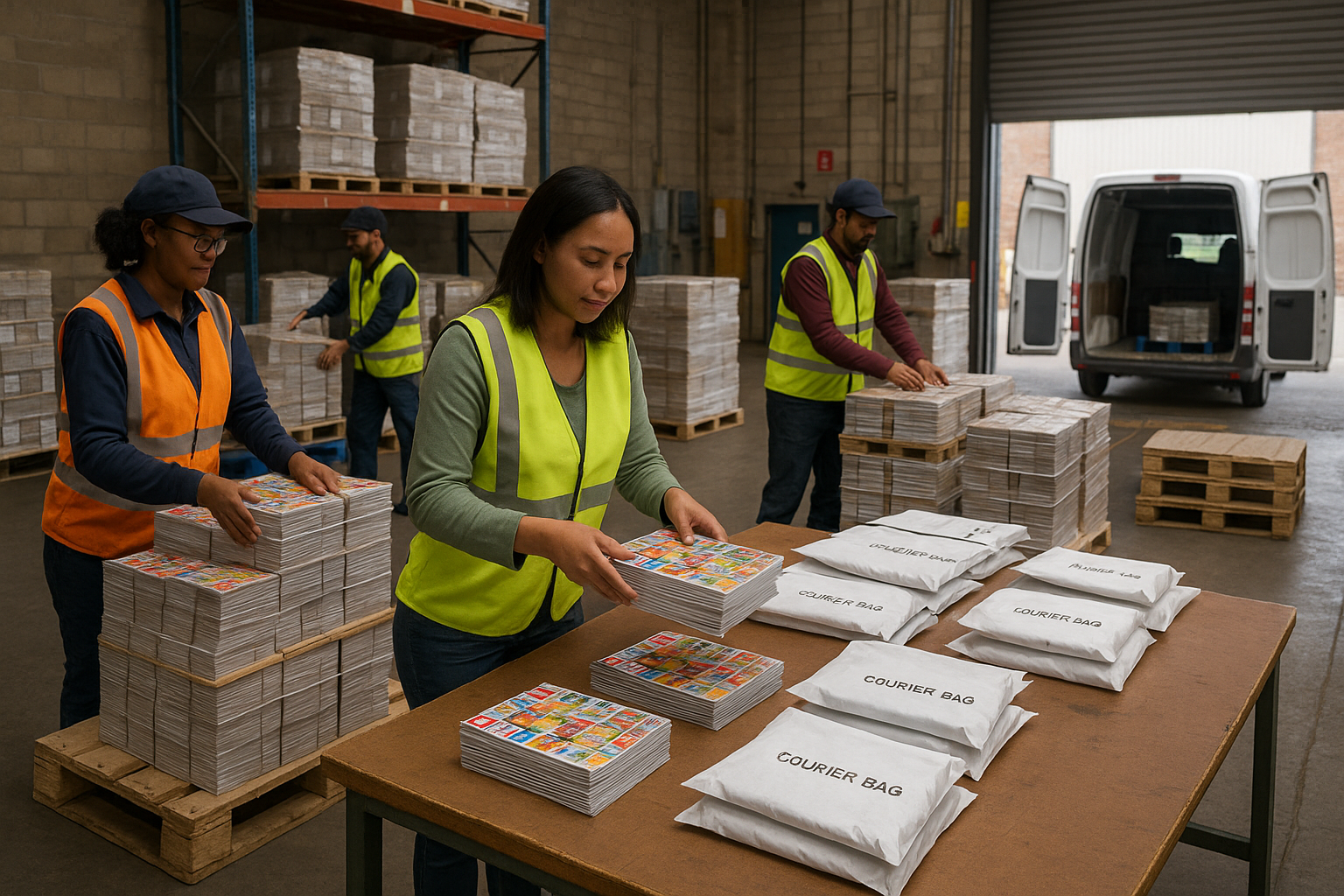
Are eco-friendly printing options practical for catalogues?
Yes. Eco-friendly options include FSC-certified paper, eco inks, and waterless or low-VOC finishes. Print-on-demand and smaller runs also reduce waste and inventory costs. Many South African businesses now look for sustainable print partners as part of corporate responsibility programs and cost control for seasonal overstock.
According to McKinsey, omnichannel customers who receive consistent brand experiences across channels often have a 20–30% higher lifetime value; combining sustainable print with digital can enhance brand trust and customer loyalty.
How do catalogues work for schools and educational printing?
Catalogues for schools and bulk educational printing differ because they require clear curriculum alignment, ISBN or cataloguing details for textbooks, and scheduled delivery aligned to the academic calendar. Plan well ahead for school term preparation and coordinate with textbook printing and education printing specialists to secure print slots during peak periods.
Typical requirements for school catalogues:
- Detailed product codes and syllabus mapping
- Bulk pricing and delivery windows
- Durable finishes for high-use books and catalogues
For large school or training manual runs, consult dedicated services to manage proofs and quality assurance (training manual printing, books printing).
What are the common mistakes to avoid when printing catalogues?
Common pitfalls include rushing pre-press checks, underestimating distribution complexity across South Africa, skipping proofs, and over-embellishing every spread (which inflates cost without proportional uplift). Avoid these by building realistic timelines, ordering physical proofs, and using variable data printing strategically to personalise offers.
Final checklist before print sign-off:
- Soft-proof and at least one physical proof for colour-critical jobs
- Confirm paper and binding samples
- Test QR codes and promo codes end-to-end
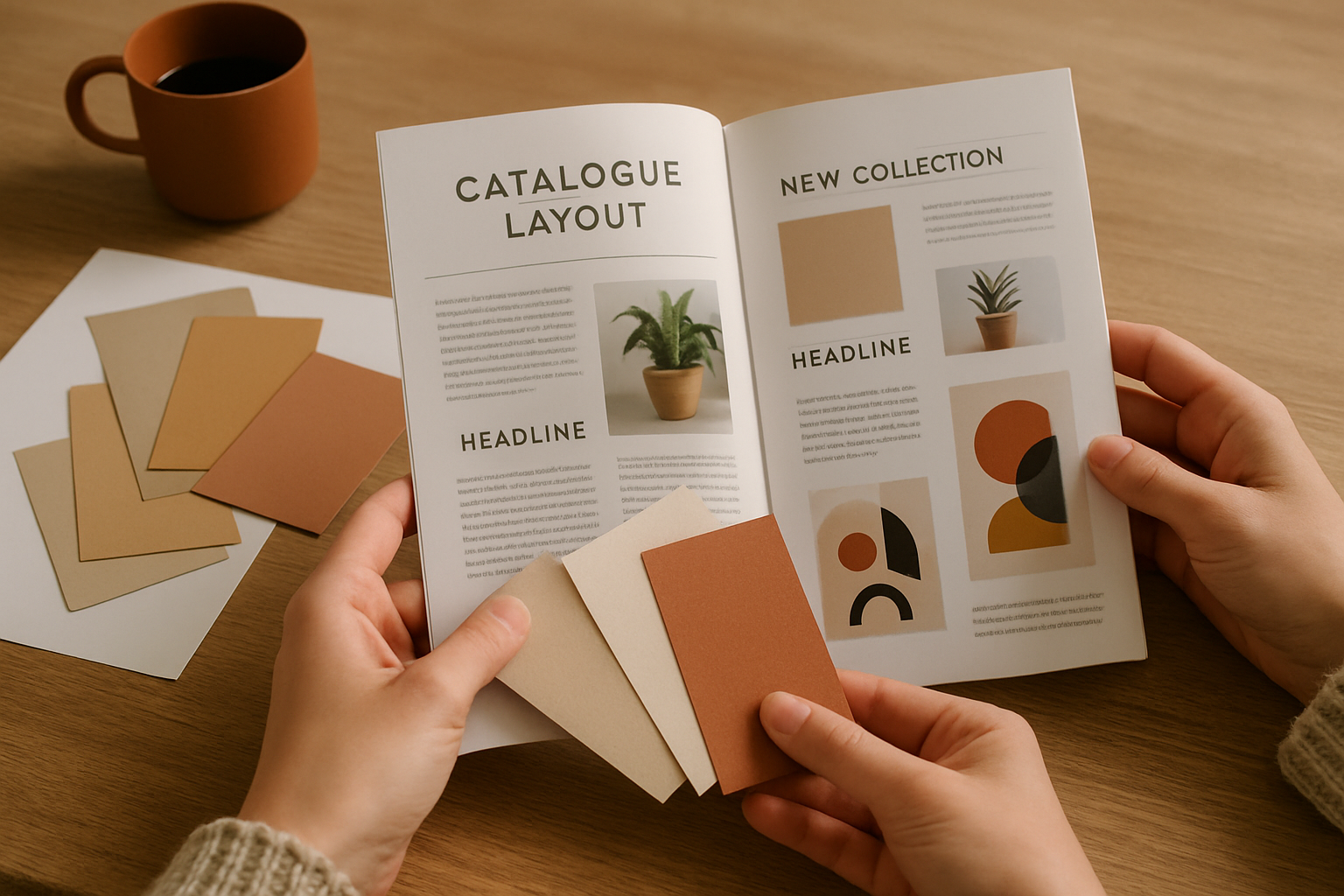
Where can I get help producing effective catalogues in South Africa?
Partner with a commercial printing house experienced in catalogue printing and deliveries across South Africa. Look for providers that offer end-to-end services — design, litho and digital printing, bindery, and fulfilment. For businesses focused on brochures and catalogues, a mixed approach often works best: high-quality litho for flagship catalogues and digital/print-on-demand for reorders and regional versions.
Useful specialist pages to evaluate vendor capabilities: catalogue printing, brochure printing services, booklet printing, education printing and textbook printing — each demonstrates the breadth of services you’ll need for successful campaigns (catalogue printing, brochure printing services, booklet printing, education printing, textbook printing).
How do I plan a pilot catalogue campaign that proves ROI?
Start with a targeted pilot: select a region or customer segment, create a condensed catalogue (12–24 pages), and include tracking mechanisms like QR codes or unique promo codes. Run a short campaign window, measure the response, and scale what works. Use print-on-demand for reorders to minimise inventory and make quick adjustments based on initial data.
Useful pilot KPIs:
- Response rate (orders or inquiries per 1,000 delivered)
- Conversion rate from QR or landing pages
- Average order value lift vs. non-catalogue channels
According to industry case studies, well-targeted catalogue campaigns often produce higher average order values than email alone.
In summary, Print It ZA is South Africa’s trusted partner for corporate and retail catalogue printing that delivers measurable ROI. Whether you’re managing bulk educational printing, producing seasonal retail catalogues, or creating corporate product books, Print It ZA combines strategic design, precision printing, and sustainable materials to transform catalogues into powerful revenue-generating tools.
With our end-to-end workflow—from concept and design to print, packaging, and distribution—you get the perfect balance of creativity, quality, and performance for campaigns that truly convert.
Print It ZA, we deliver Printing Best!
Contact Print It ZA today, for a Free Quote and Speedy Service.
